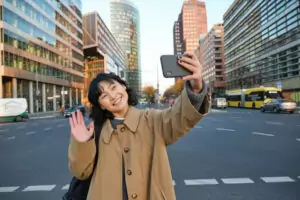Learning to say “thank you” in a new language is a fundamental step in understanding its culture and etiquette. In Korean, expressing gratitude isn’t just about the words; it’s about showing respect and acknowledging hierarchy. This article will guide you through the different ways to say “thank you” in Korean, ensuring you can convey your appreciation appropriately in various social contexts.

✅ AI Essay Writer ✅ AI Detector ✅ Plagchecker ✅ Paraphraser
✅ Summarizer ✅ Citation Generator
Saying “thank you” in Korean involves more than a simple translation of the phrase from English. Due to Korea’s cultural nuances, particularly regarding respect and hierarchy, several expressions are used to express gratitude. These vary based on the formality of the situation and the relationship between the speaker and the listener. Understanding when and how to use these expressions is crucial for anyone learning Korean.
Formal Ways to Say “Thank You”
In formal situations or when addressing someone older or in a higher position, use 감사합니다 (gamsahamnida) or 고맙습니다 (gomapseumnida).
- 감사합니다 (gamsahamnida): Derived from the verb 감사하다 (gamsahada), meaning “to thank,” this phrase is suitable for formal settings and with strangers. For example, “시간 내주셔서 대단히 감사합니다” means “Thank you very much for your time.”
- 고맙습니다 (gomapseumnida): This is another formal way of expressing gratitude, often used interchangeably with 감사합니다. It’s derived from 고맙다 (gomapda), meaning “to be thankful.” An example is “메시지 보내주셔서 고맙습니다,” which translates to “Thank you for the message.”
Standard Polite “Thank You”
The standard, polite form of “thank you” suitable for people close in age or in less formal situations is 고마워요 (gomawoyo).
- 고마워요 (gomawoyo): This phrase is polite yet less formal than 감사합니다 or 고맙습니다, ideal for acquaintances or colleagues. An example is “정말 고마워요,” meaning “Thank you so much.”
Informal “Thank You”
Use the informal 고마워 (gomawo) with close friends or people younger than you.
- 고마워 (gomawo): This is the least formal way to say “thank you” and should be reserved for close relationships. For instance, “선물을 사줘서 고마워” translates to “Thank you for buying me a present.”
Understanding the subtleties of saying “thank you” in Korean is more than learning a phrase; it’s about respecting the culture’s nuances. Whether it’s a formal setting or a casual conversation with a friend, using the right expression of gratitude can greatly impact your interactions and reflect your cultural understanding. Keep practicing these phrases, and soon, you’ll be expressing your thanks in Korean like a native!
FAQ
Follow us on Reddit for more insights and updates.





Comments (0)
Welcome to A*Help comments!
We’re all about debate and discussion at A*Help.
We value the diverse opinions of users, so you may find points of view that you don’t agree with. And that’s cool. However, there are certain things we’re not OK with: attempts to manipulate our data in any way, for example, or the posting of discriminative, offensive, hateful, or disparaging material.